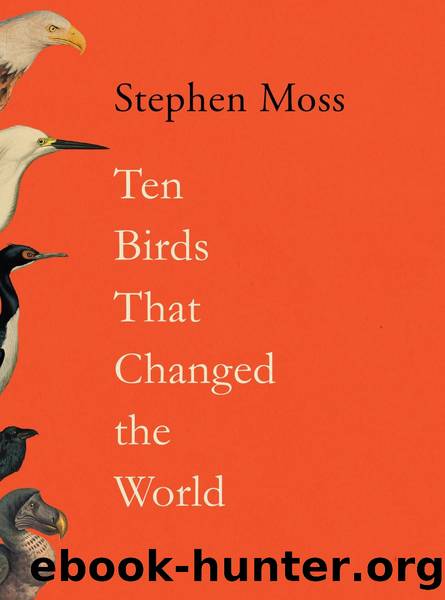Ten Birds That Changed the World by Stephen Moss

Author:Stephen Moss
Language: eng
Format: epub
Publisher: Faber and Faber
Published: 2022-03-15T00:00:00+00:00
When visiting South America, the worldâs most bird-rich continent, few birders bother to seek out the guanay cormorant.* After all, with so many exotic species, including dozens of colourful toucans, tanagers, manakins, parrots and hummingbirds, why would you go out of your way to look for such a common, and apparently ordinary, seabird? When I travelled to Peru, however, in May 2017, the guanay cormorant was one species I was really hoping to see. Not for its rarity or beauty, but because of all the worldâs 10,000-plus different birds, it has one of the most extraordinary stories to tell.
This is a tale of greed and profit, horror and hardship, vast riches and almost unimaginable suffering. It also changed the rural landscapes of Britain, Europe and North America, and transformed the way we grow and produce our food. It led to the guanay cormorant being dubbed âthe billion-dollar birdâ â the most valuable wild bird in human history.
On my very first morning in Peru, I headed to Playa Pucusana harbour, an hour or so south from the capital, Lima. There, among the colourful fleet of fishing boats, I scanned through flocks of bulky Peruvian pelicans, elegant Inca terns and scavenging turkey vultures, searching for a medium-sized cormorant with a distinctively pied plumage. After a few minutes, I found what I was looking for. The bird, a smart adult, was perched on the rocks at the edge of the harbour, showing off its pale pink feet and deep crimson eyepatch. Its jet-black back, contrasting with the pure white breast, made it look rather dapper, as if the bird had dressed for dinner.
Even though most visiting birders ignore the guanay cormorant, other people have long understood its worth. Its value is commemorated in that strange name, for the guanay cormorant is one of only a handful of the worldâs 10,000-plus bird species to be called after its most important by-product.â The name comes from the birdâs droppings, known by a word derived from the indigenous Quechua language of Peru: guano.
*
Download
This site does not store any files on its server. We only index and link to content provided by other sites. Please contact the content providers to delete copyright contents if any and email us, we'll remove relevant links or contents immediately.
| Anthropology | Archaeology |
| Philosophy | Politics & Government |
| Social Sciences | Sociology |
| Women's Studies |
The Leavers by Lisa Ko(6473)
Born to Run: by Christopher McDougall(6260)
iGen by Jean M. Twenge(4702)
Sapiens by Yuval Noah Harari(4537)
The Kite Runner by Khaled Hosseini(4435)
Spare by Prince Harry The Duke of Sussex(4198)
Bullshit Jobs by David Graeber(3180)
Livewired by David Eagleman(3122)
Goodbye Paradise(2963)
Never by Ken Follett(2880)
A Dictionary of Sociology by Unknown(2518)
Harry Potter 4 - Harry Potter and The Goblet of Fire by J.K.Rowling(2416)
The Club by A.L. Brooks(2360)
People of the Earth: An Introduction to World Prehistory by Dr. Brian Fagan & Nadia Durrani(2346)
The Social Psychology of Inequality by Unknown(2311)
Machine Learning at Scale with H2O by Gregory Keys | David Whiting(2291)
Harry Potter and the Order of the Phoenix (5) by J.K. Rowling(2227)
0041152001443424520 .pdf by Unknown(2220)
Don't Sleep, There Are Snakes by Daniel L. Everett(2217)
